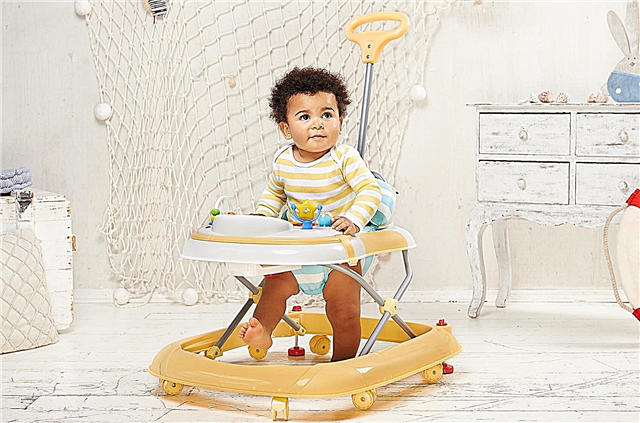Parents look forward to their child's first steps, which are as important as the first word. However, the baby takes time to walk and run. Therefore, people often ask themselves how many months a child can be put on its feet.

Baby's first steps
Stages of the formation of the musculoskeletal system
Every newborn has beautiful chubby legs. They don't look like the legs of an adult. A flat foot in a baby is completely normal, since the arch of the foot has not yet developed. It begins to build only with a gradual load, at first the skeleton of the foot consists of soft cartilage. When the baby learns to walk, the foot transforms from the inside in three dimensions: the heel rotates and the arch is lifted.
The formation of muscles and bones occurs gradually, imperceptibly for daily external observation. They are being prepared for the future load. The brain functions that control movements develop in parallel. During the first year of life, the infant acquires the necessary skills and becomes ready to walk, run and jump.
Ability to lift the upper body
By about four to five months, the baby begins to rise, lying on his stomach and resting on his hands in front of him. If he does it confidently, then it means that he has successfully overcome the first stage and is prepared to roll over, sit, crawl and walk in the future.
Ability to crawl
The next period, around the seventh month, is very innovative. The toddler may begin to lean on his hands and push his knees under him. Gradually he performs back and forth movements and finally begins to crawl.

The baby starts to crawl
Active crawling
As he improves his skills, sometimes the baby crawls incredibly fast. Crawling is a very important developmental stage, the child uses the whole body and learns to overcome obstacles.
Important! When a baby gets somewhere, it is better not to help him if it does not threaten his safety.
Trying to get to your feet
After 7 months of age, there comes a time when the child begins to make attempts to stand on his legs. It rests on the walls of the crib, pieces of furniture. In the ninth month, babies start walking around furniture, or holding the hands of adults.
First confident steps
Gradually, the child becomes brave, begins to confidently transfer weight from foot to foot. One day he will let go of the support and take the first independent steps.
Important! The kid will fall a lot, so all dangerous objects should be removed.
During this period, many adults make the mistake of catching and guiding the child. It is better to give him the opportunity to independently realize his strength. At about a year and a half, the baby should be walking relatively well. He begins to discover new dimensions for himself.
Early childbearing
The most important principle is not to push the child. He needs time. Healthy development occurs naturally. Each baby is unique and knows best when it's time to stand alone.
Of course, you can help him, but within reasonable limits. Walking is just the culmination of the whole process and precedes many skills that the little man must learn before getting up. It is not so important to teach a child to walk, how to endure, so as not to help him.
At 2, 3, 4, 5, 6 months
For some cases, it is worth knowing when to start putting the child on its feet, and what kind of support the baby needs in this case:
- At 2-3 months, the formation and strengthening of the muscle frame around the spine has not yet been completed, and the legs are also not ready for the loads. 3-month-old babies can be put on their feet solely for the detection of reflexes. This is done by the pediatrician as needed;
Important! The child should not be allowed to lean on his legs at the age of 3 months. If he is in an upright position, then it is necessary to hold the full weight of the child with the hands of an adult.
- 4 months. Some experts advise to consolidate the step reflex of the child, which is formed if you periodically lean the baby slightly on his legs, still holding the bulk of his weight in his hands. It is believed that in this way he will learn to walk faster, without even trying to crawl. However, these recommendations are dubious and not supported by serious practical results;
- 5-6 months. At this stage, some babies try to get up themselves, holding onto the support. But their legs are still not ready to withstand the weight of the baby; one should not allow the child to be on his feet for a long time. If he does not give up trying, it is better to hold him under the armpits, not allowing full support on his own legs.

The kid gets up, holding on to the support
The consequences of getting up early on legs
Adults do not think about how difficult standing on their feet is, while many muscles in the body are used for balancing and fine tuning is required. The kid must master everything on his own, spending a certain amount of time on this:
- Postural control. Describes the involuntary movement and sensory processes that allow the child to maintain position against gravity. It develops throughout early life, from the ability to hold the head to the ability to walk confidently;
- The ability to keep your weight on your feet. When the baby is lying down, its weight is distributed over the entire length of the body. To learn to stand, he must be able to maintain his full weight on his legs and feet;
- Motor skills are those abilities that use large muscles in the body to kick, lift, and walk. They require muscle tone and strength, as well as the ability to perform motor function.
Important! Early standing on the legs provokes an inadequate load on the spine for this age, and also leads to problems with the hip joint, which is still in the developmental stage, up to dislocation of the femoral head.
In addition to the hip joint, early standing can cause pathologies in the development of the knee joints, feet, and poor posture.
Baby's readiness to stand on his feet
On average, parents should be guided by the child's age and not try to help him get back on his feet before the ninth month of life. But not all children develop at the same rate, some are ready to get up a little earlier, others a little later.
Signs of readiness
When determining the signs of readiness, the following factors should be considered:
- Genetic. When one of the parents got to their feet too early or, conversely, late, you should expect the same from the baby. In addition, the increased weight of the baby also slightly inhibits the baby's willingness to stand;
- The presence of common diseases. Congenital or acquired pathologies, viral infectious diseases always affect the development of the child. These babies get up later;
- The cyclical nature of physical and mental development. In the development of the child, changes occur in leaps and bounds, slowly accumulating. When the baby is making progress in pronouncing the first words, is keen on toys, that is, he is engaged in intellectual activity, he can give up trying to get up for a while and generally moves less. Then, on the contrary, there is a period of increased physical activity;
- Motivation. It consists in the desire of the baby to stand on his own legs. To do this, you can interest him by putting the toy out of reach, so that the baby will need to make some additional movements to get it.
Important! For some diseases (for example, juvenile arthritis), parents should not decide to put the child on their own without consulting a specialist.
Difference for girls and boys
There is no single opinion here. Most experts say that there is no difference, it all depends on the physical condition of the baby. Others advise putting the girl a little later than the boy, on average 1 month.
Age of placing the child on the legs
If parents notice a readiness, and most importantly, a great desire of the baby to get up, then they often think: is it not early, at how many months a healthy child gets up on his feet without threatening to harm his proper development, and when is the time to help him?
You do not need to suppress the activity of the baby and constantly lay or seat him when trying to get up. It will be enough for the parents themselves to get rid of attempts to put it on. He still won't be able to stay on his feet for a long time.
When the child has reached about 8 months, sometimes even earlier, and shows a frequent desire to stand, the task of the parents is to support him with the armpits, trying to avoid prolonged stress on the legs and spine of the child.
The opinion of Dr. Komarovsky
The authoritative children's doctor, Komarovsky, is categorically against any exact timing in determining the child's ability to get up. He believes that each baby develops individually, copying the behavior of adults, the main thing is not to interfere with him and not try to forcefully influence the development process.

Doctor Komarovsky
In his opinion, if a child does not show a desire to sit, stand or crawl, any attempts to put him in pillows or put anything but harm will not bring. If the baby is trying to do it himself, then you need to actively encourage him.
Helping your child stand up
Some parents are keen to put their baby on a walker. Walkers are potentially dangerous. They do not teach how to walk, but they expose children to the danger of toppling over. Accidents are documented, for this reason, pediatricians in many countries are demanding a ban on the production and sale of walkers.

Baby in a walker
Important! Walkers are the enemy of correct posture, correct development of legs and feet. In fact, they teach the child to walk on their fingers and delay the acquisition of a sense of balance.
Parents can help their children build muscles and prepare them to successfully learn new skills without getting ahead of the curve. Ways to help with this:
- Exercise for the baby, with massage of the feet and flexion / extension of the legs;
- Performing a general body massage under the guidance of a specialist;
- Favorably affect the psychological and physical development of classes in the pool, the combination of swimming with various water exercises;
- Encouraging the baby to crawl. For example, put it on your tummy and draw attention with a toy. When he tries to crawl, put his palms on his feet so that the baby can push off.

Encouraging toddler crawling
The correct development of babies depends on the patience of the parents and the environment. Let the child do what comes naturally to him. If you force him to be active, for which he is not yet ready, the baby will face problems for life. It is useful for parents to be guided by the main principle "It is better to help your child without helping him at all."



